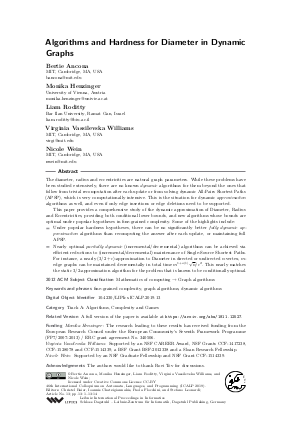LIPIcs.ICALP.2019.13.pdf
- Filesize: 0.5 MB
- 14 pages

 Creative Commons Attribution 3.0 Unported license
Creative Commons Attribution 3.0 Unported license





















Feedback for Dagstuhl Publishing